Table of content
Bayanur, a region nestled in the heart of Inner Mongolia, China, is renowned for its rich culinary heritage, particularly its distinctive approach to preserving pork through salt curing. This ancient technique, passed down through generations, transforms fresh pork into a flavorful, long-lasting delicacy that serves as both a staple ingredient and a cherished cultural symbol. The process, rooted in practicality and refined by tradition, combines precise ratios of salt, aromatic spices, and meticulous aging to create a product celebrated for its depth of flavor and tender texture. This article delves into the intricate steps of curing Bayanur-style salted pork, exploring the history, science, and artistry behind this beloved preservation method.
The Cultural Significance of Salted Pork in Bayanur
In Bayanur, where harsh winters and remote terrain once made fresh meat scarce, salt curing emerged as a vital survival strategy. By preserving pork through salt and time, local communities ensured a reliable food source during lean months. Today, this practice endures not merely as a relic of the past but as a culinary tradition that connects residents to their ancestors. Salted pork, known locally as yan zhurou, graces feasts, festivals, and family meals, its umami-rich taste embodying the region’s resilience and culinary ingenuity.
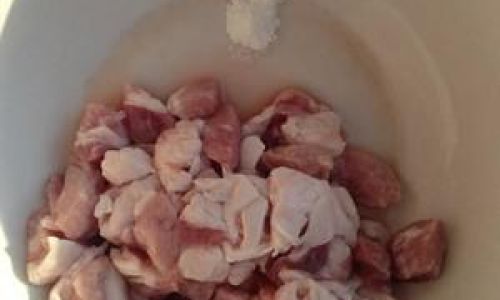
Selecting the Ideal Cut of Pork
The foundation of exceptional salted pork lies in selecting the right cut. In Bayanur, cooks traditionally favor pork belly or shoulder—cuts with a balanced ratio of fat to lean meat. Fat contributes to the meat’s succulence during curing and aging, while lean muscle ensures a satisfying texture. When sourcing pork, freshness is paramount. The meat should be firm, pinkish-red, and devoid of off-odors, indicating optimal quality.
Butchers in Bayanur often advise against using overly fatty or bone-in cuts, as excess fat can turn rancid during aging, and bones may introduce unwanted bacteria. A 2–3 kilogram (4.4–6.6 lb) portion is ideal, as smaller pieces cure unevenly, while larger ones risk spoilage before the salt fully penetrates.
Crafting the Curing Mixture
The curing mixture, a blend of coarse sea salt, spices, and occasionally sugar, forms the flavor backbone of the pork. Bayanur-style recipes typically include:
- Coarse Sea Salt (15–20% of Meat’s Weight): The primary preservative, salt draws moisture from the meat, inhibiting microbial growth.
- Sichuan Peppercorns (1–2 Tablespoons per Kilogram): Adds a mild, citrusy heat and aromatic complexity.
- Star Anise (3–4 Pods): Imparts a sweet, licorice-like fragrance.
- Dried Chili Flakes (Optional, 1–2 Teaspoons): For a subtle warmth.
- Granulated Sugar (1–2 Tablespoons, Optional): Balances saltiness and encourages browning during cooking.
Some families incorporate local herbs like wild thyme or oregano, reflecting the region’s steppe environment. The spices are lightly toasted in a dry pan to release their oils before being ground coarsely—a step that elevates their aromatic impact.
The Curing Process: Step by Step
Preparing the Pork
Begin by trimming excess fat and silverskin from the pork, leaving a 0.5–1 cm (0.2–0.4 inch) fat cap to protect the meat during curing. Rinse the meat under cold water and pat it thoroughly dry with paper towels. Any residual moisture can compromise the cure.
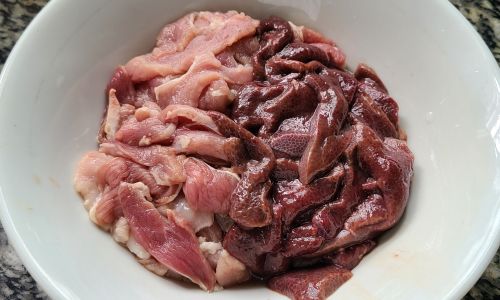
Applying the Curing Mixture
In a large bowl, combine the salt, spices, and sugar (if using). Rub the mixture generously over the pork, ensuring every nook and cranny is coated. Pay special attention to crevices and edges, as these areas are prone to uneven curing. For added depth, some cooks pierce the meat with a skewer or fork to allow the cure to penetrate deeper.
Layering in a Ceramic Crock
Transfer the seasoned pork to a ceramic crock or food-safe plastic container. Layer the meat with any remaining curing mixture, pressing down firmly to eliminate air pockets. Cover the container with a clean, lint-free cloth and secure it with a rubber band or string.
Refrigeration or Cold Storage
Place the container in a refrigerator set to 2–4°C (35–39°F) or a cool cellar. The low temperatures slow fermentation, allowing the salt to work gradually. If using a refrigerator, position the container on the bottom shelf to catch any drips.
The Aging Period: Patience and Precision
Curing time varies based on the pork’s thickness and ambient conditions. In Bayanur, where autumn’s crisp air aids preservation, the process typically spans 7–10 days. However, in modern kitchens, 14 days under refrigeration ensures thorough curing.
Daily Care:
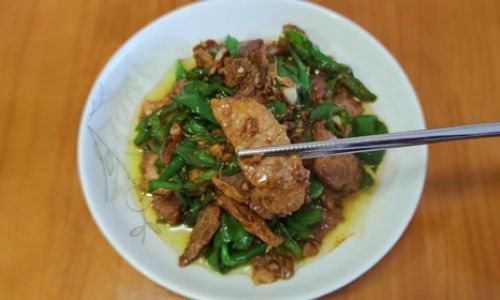
- Flip the Meat: Every 24 hours, turn the pork to redistribute the brine and salt.
- Monitor Moisture: Excess liquid will accumulate; drain it periodically to prevent sogginess.
- Check for Firmness: The meat should feel denser and slightly resistant to pressure, signaling proper curing.
Post-Curing Preparation: Rinsing and Drying
Once cured, remove the pork from the brine and rinse it under cold water to remove excess salt. Pat it dry with towels, then hang it in a well-ventilated area away from direct sunlight. In Bayanur, homes often utilize attics or covered porches with steady airflow. Allow the meat to air-dry for 24–48 hours until a pellicle—a tacky, paper-like surface—forms. This layer seals in moisture and enhances flavor during smoking or aging.
Smoking (Optional but Traditional)
While not mandatory, smoking imparts a depth of flavor synonymous with Bayanur-style salted pork. Use hardwoods like oak or fruitwoods (apple, cherry) for a mild, sweet smoke. Cold-smoke the meat at 20–25°C (68–77°F) for 4–6 hours, ensuring the temperature remains low to prevent cooking.
Aging: The Final Transformation
Aging is where the pork truly comes into its own. Hang the meat in a cool, dark place with 50–60% humidity and temperatures between 10–15°C (50–59°F). A basement, wine cellar, or purpose-built curing chamber works well.
Aging Duration:
- 3–4 Weeks: For a mild, tender texture.
- 6–8 Weeks: For intense flavor and firmness (traditional in Bayanur).
- 3 Months or More: For advanced umami notes, though vigilance against spoilage is critical.
Monitoring During Aging:

- Check for Mold: A thin layer of white mold (similar to cheese rind) is harmless and can be wiped off with a vinegar-dampened cloth. Green or black mold indicates spoilage and requires discarding the meat.
- Inspect Firmness: The pork should yield slightly to pressure but not feel mushy.
Storage and Shelf Life
Properly cured and aged salted pork can last 6–12 months when stored correctly. Wrap it in cheesecloth or butcher paper (not plastic, which traps moisture) and keep it in a cool, dry pantry. For extended storage, vacuum-seal and freeze.
Cooking with Bayanur-Style Salted Pork
Before cooking, soak the pork in cold water for 2–4 hours to reduce saltiness. Classic preparations include:
- Stir-Fries: Slice thinly and sauté with garlic, chili, and vegetables like cabbage or bell peppers.
- Stews: Simmer with potatoes, carrots, and soy sauce for a hearty meal.
- Rice Accompaniment: Steam cubes of pork with rice, allowing the fat to infuse the grains.
Health Considerations and Modern Adaptations
While salted pork is a dietary staple, its high sodium content warrants moderation. Modern cooks often reduce salt by 10–15% or substitute part of it with potassium chloride. Nitrate-free cures are also gaining popularity, though they require stricter temperature control to prevent botulism.
Conclusion: A Taste of Tradition
Curing Bayanur-style salted pork is a dance of patience, precision, and respect for tradition. Each step—from selecting the meat to monitoring its slow metamorphosis—honors the ingenuity of generations past. Whether enjoyed in a steaming stew or sliced thinly over rice, this preserved pork embodies the spirit of Inner Mongolia: resilient, resourceful, and deeply connected to the land. For those willing to embrace the rhythm of time, the reward is a flavor that transcends seasons, a culinary heirloom frozen in salt and smoke.
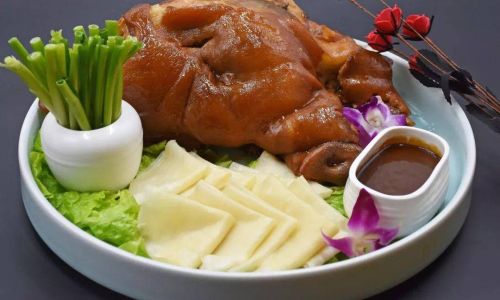

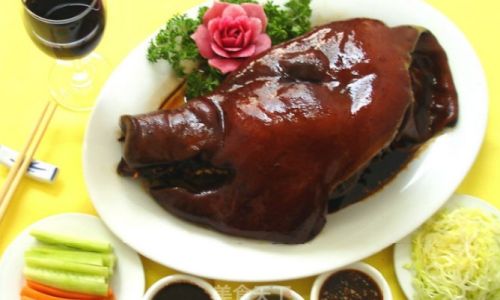

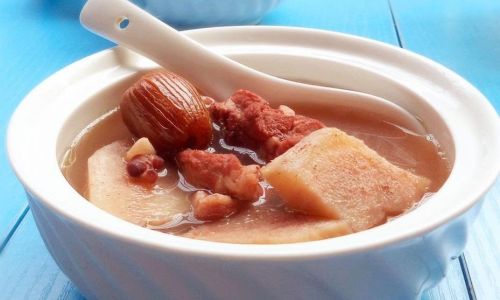
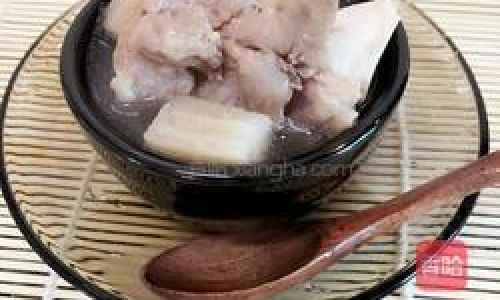
0 comments